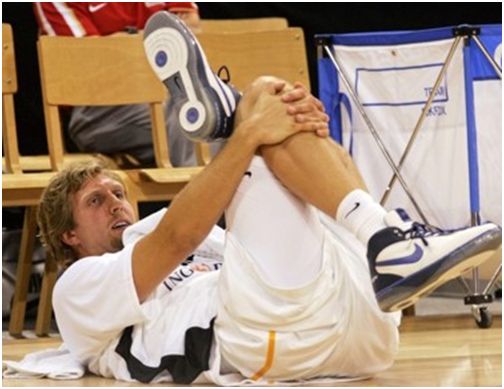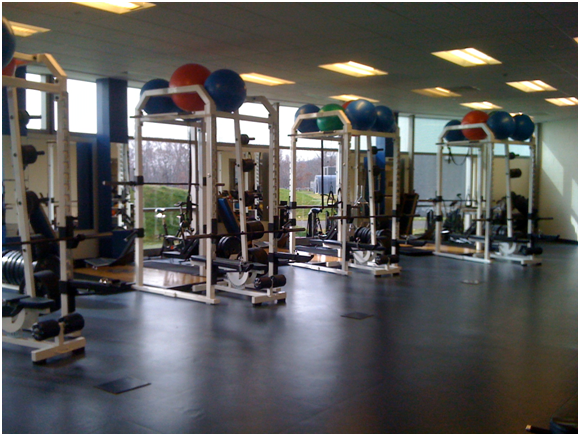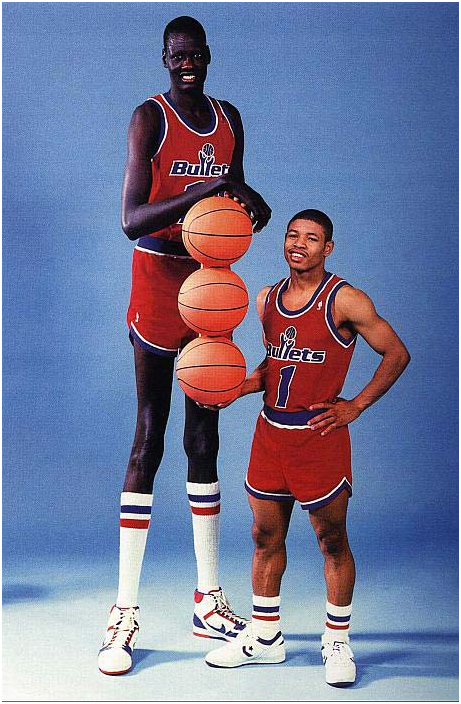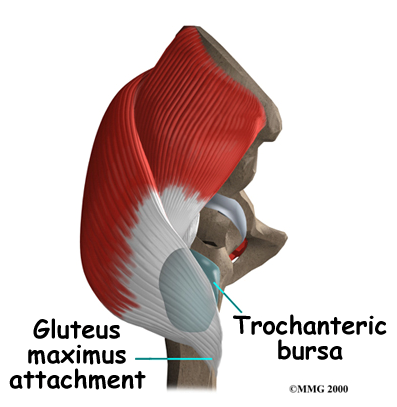Click HERE to view this article by Brijesh Patel.
Posted by Boston Sports Medicine and Performance Group on Apr 24, 2011 9:42:00 AM
Click HERE to view this article by Brijesh Patel.
Topics: Basketball Related, Brijesh Patel
Posted by Boston Sports Medicine and Performance Group on Dec 26, 2010 7:41:00 PM
by Brijesh Patel
I was recently speaking to my good friend, Art Horne (athletic trainer and strength and conditioning coach at Northeastern University) at a pre-season basketball scrimmage about warming up. Most basketball teams typically warm-up and stretch on the court. Art wondered where we did ours, because our guys came out at 45 on the clock already to go with their specific warm-up with their coaches. I explained that we conducted our warm-up in the weight room and he thought it would be a great idea if I presented what we do in an article. I didn’t think it was earth shattering but thought it would be a good idea to explain what we do to prepare ourselves for a game.

Here at Quinnipiac, we typically play doubleheader basketball games. Our women play first and as soon as their game is over, there is 30 minutes on the clock before the men’s game. We used to do a traditional warm-up and dynamic stretch on the court 60 minutes prior to the game. The court isn’t available during a double header so we decided to take the warm-up to the weight room. What started out as a necessity turned out to be our norm now for home games as our guys preferred going to the weight room over the court.
Our on court warm-up tended to be a distraction for some guys as they were looking around in the stands seeing if their friends and family were there yet; What the other team was doing would also distract them. By moving to the weight room, we could really focus on “us” and “what we do”. We could crank up the music, get some good energy going and really get prepared to be successful for the following competition. Our guys now prefer and look forward to “stretching” in the weight room. They’ve made a playlist on their ipod and know that warming up in the weight room is part of their pre-game routine.

The order of warm-up is the following:
1. Warm-up
2. Loosen-up
3. Turn-On
4. Build-up
This is the general warm-up as it leads to the specific warm-up that the coaches will conduct after they are done with me. In the specific warm-up the guards and bigs will split up and work on shooting, post moves, coming off screens, etc.
Here are the goals and examples of what we do for each category:
1. Warm-up – our goal is to increase the core temperature and break a sweat. We start off with agility ladder work for about 3-4 minutes.
2. Loosen-up – our goal is to work on dynamic mobility of the entire body (ankles, hips, t-spine) in all 3 planes of motion. We will start with various types of arm circles, progressing to isolated dynamic flexibility drills for the lower body (knee hugs, hamstring kicks, etc) and then progressing to lunge variations with arm drivers. This takes about 6-8 minutes.
3. Turn-on – our goal is to activate the nervous system and get the glutes firing. We incorporate glute bridges, single leg balance work, as well as low intensity reactive plyometrics (foot fire, line hops, etc.) This takes about 1 minute.
4. Build-up – our goal is to incorporate movements that they will perform during their activity. We incorporate sprinting, backpeddling and lateral shuffling as well as some change of direction work. This takes about 2 minutes.
The total warm-up time is about 13-15 minutes and really gets our athletes ready for their specific warm-up.
I hope this article gets you thinking about how you get your athletes ready to compete and may give you some other ideas and options.
Topics: Strength Training, Brijesh Patel
Posted by Boston Sports Medicine and Performance Group on Nov 13, 2010 10:36:00 AM
by Brijesh Patel
In-season training may be the most confusing and misunderstood component of the year long training cycle. Everybody knows that it is important and must be done but getting better at your particular sport should be the main goal during the season.
That being said, I think in-season training might be one of the most important time of the year to train. Sure the off-season and pre-season are important, but the goal should be to be at your physical peak for the end of the regular season and post-season tournaments. To attain that peak means that the correct steps must be laid down prior to the conclusion of the season.
My philosophy of in-season training might be quite different than others but I believe it to be extremely simple and easy to implement.
DO THE OPPOSITE OF THE SPORT
Huh? What does that mean? Shouldn’t we be doing things specific to make them better at their sport?
I strongly disagree that we should be doing the similar patterns on the sport – this can lead to overuse type injuries that we are trying to prevent against. We want to keep the athletes as healthy as possible so they can be at their physical peak for the end of the season.
Most team sports have the following similarities in-season:
1. High Volume of Activity
2. Low Loads being used – typically just their bodyweight
3. Low Amplitude of movement – never experience full joint range of motion during most sporting activities.
So according to my statement above of DO THE OPPOSITE OF THE SPORT we have the following guidelines of in-season training:
1. Low volume of in-season strength training
2. High Loads to stimulate higher threshold motor unit activation for strength maintenance and/or gains
3. High amplitude of movements to restore and enhance joint mobility.
These guidelines help to direct how I write training programs and progress them throughout the season so we are ready to peak near the end of the year.
Other common sense guidelines that can be used are the following:
1. If your sport is inherently anaerobic, train the aerobic system for extra conditioning
2. If your sport involves a lot of impact (running, jumping) – don’t run and jump them extra.
3. If your sport has a dominance of the anterior chain, train the posterior chain to balance things out.
4. If your sport has a tendency towards kyphotic postures, hammer thoracic spine extension.
5. If your sport has a tendency to lose mobility in a certain area (i.e. ankles, hips), address those issues.
6. If your sports practice structure doesn’t include much conditioning, then this must be included to conditioning levels do not decrease in-season.
By now, I think you can get the point of how in-season training can be accomplished.
These are extremely general guidelines but simple and tends to make a lot of sense.
Hopefully they can help you and feel free to share what your thoughts are.
Topics: Strength Training, Brijesh Patel
Posted by Boston Sports Medicine and Performance Group on Oct 24, 2010 11:50:00 AM
Topics: Strength Training, Brijesh Patel
Posted by Boston Sports Medicine and Performance Group on Oct 9, 2010 6:21:00 PM
Topics: Strength Training, Brijesh Patel
Posted by Boston Sports Medicine and Performance Group on Oct 3, 2010 4:25:00 PM
Topics: Health & Wellness, Brijesh Patel
Posted by Boston Sports Medicine and Performance Group on Sep 21, 2010 8:27:00 PM
Topics: Strength Training, Brijesh Patel
Posted by Boston Sports Medicine and Performance Group on Sep 21, 2010 8:21:00 PM
Topics: Strength Training, Brijesh Patel
Posted by Boston Sports Medicine and Performance Group on Sep 21, 2010 8:20:00 PM
Topics: Strength Training, Brijesh Patel
Posted by Boston Sports Medicine and Performance Group on Sep 21, 2010 8:12:00 PM
by Brijesh Patel

If you work with basketball athletes or taller athletes, you may have noticed that these athletes may struggle with not only double leg squatting but also single leg squatting. This is because their femurs tend to be longer than the average folk.
This comes back to simple physics as a longer lever is more difficult to control. And if an athlete has trouble controlling movements, injuries are sure to occur. Every joint within our body needs a certain amount of mobility (movement) and stability (control). If mobility is established then we need to add stability/control to it. In our case of long femurs and squatting, the first step is to make sure there is adequate mobility within the hip joint. If that is good we need to move onward to see why an athlete still has trouble performing the movement. The movements that tend to be the hardest to control are the eccentric actions of the squatting movement which are internal rotation and adduction. Now what muscles help control these femoral movements?
Namely the muscles that help to externally rotate and abduct the hip which are the gluteal muscles.

The Glute max, medius and minimus play a huge role in developing femoral control. And we have to train these muscles in ways that help to work on these actions.
If we don’t include exercises that help to work on femoral control than it could lead to knee issues in our athletes. Double leg squatting is a good starting point but having 2 fixed points of contact doesn’t challenge the hip musculature to the same degree as single leg work….and single leg unsupported to be specific.
Mike Boyle was the first strength coach that broke down single leg training into single leg supported and single leg unsupported. Single leg supported exercises is where you have 2 points of contact where one leg is performing the majority of the work. Examples are lunges, split squats, lateral squats, etc. Single leg unsupported work is where the body is supported on a single leg and the other leg is free (in the air). Examples of these exercises are single leg squats, single leg reaches, and pistol squats.
With basketball athletes and athletes with longer femurs it is imperative that single leg unsupported work be included to help develop the glutes to control the femur. Single leg squats to a box with a band above or below the knees is a great way to start and get the athlete to understand femoral control and the importance of it. You may need to start your taller athletes with a higher box and progressively move them down to a lower box as their strength and control improve.
We should all know the importance of single leg strength now, but if you are working with taller athletes make sure single leg unsupported work is included within your program.
What are other variations that you would include
Topics: Strength Training, Brijesh Patel
© 2020 Boston Sports Medicine and Performance Group, LLC